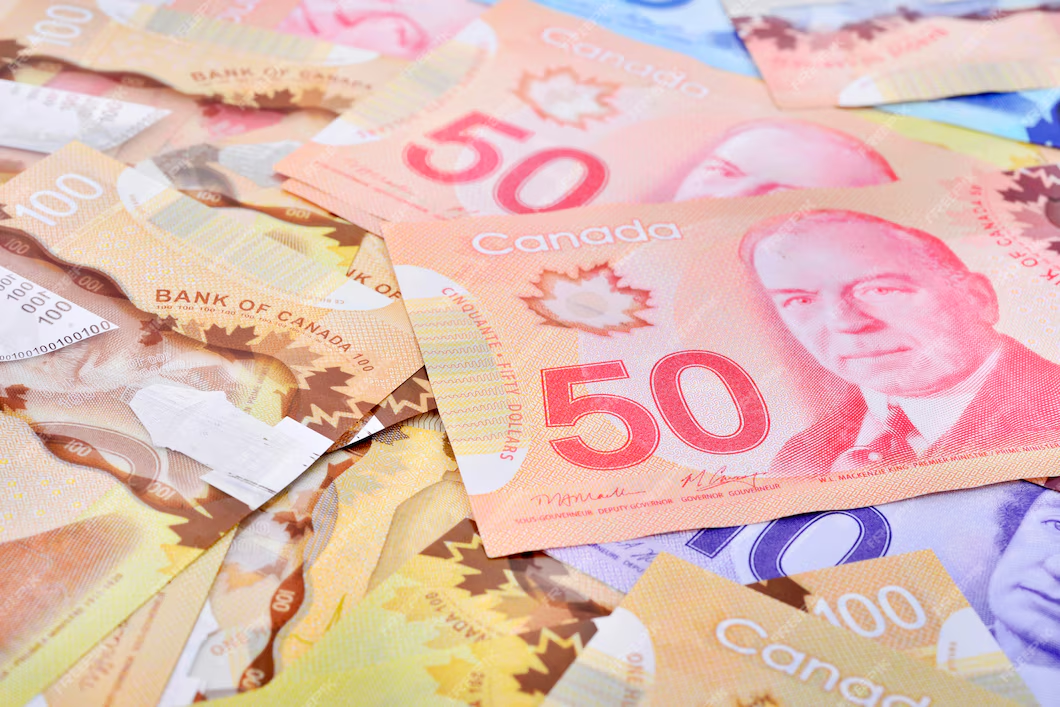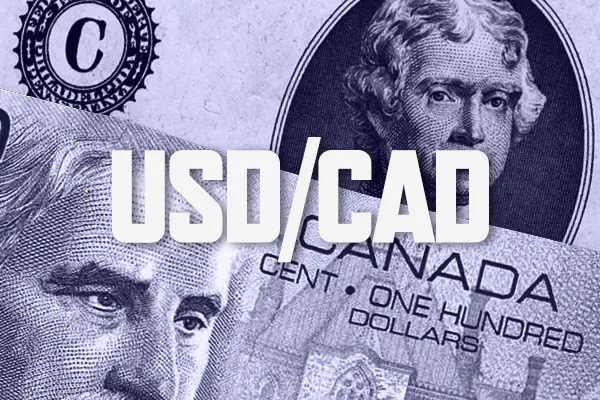USD/CAD Remains Resilient Amid Trade Tensions and Political Uncertainty in Canada
The USD/CAD currency pair remains strong around the 1.4350 level, indicating an upside bias in the face of rising trade tensions and increasing political uncertainty in Canada. The Canadian Dollar is under pressure after China imposed a 100% tariff on major Canadian exports, escalating a wider trade war. In addition, speculation regarding an early federal election in Canada contributes to market uncertainty. While the US Dollar is being burdened with the fear of a possible economic downturn, increasing US Treasury yields provide some respite. With shifting global trade dynamics and unfolding political events, USD/CAD remains in focus for market players. KEY LOOKOUTS • China’s imposition of 100% tariff on Canadian exports can be a big burden for CAD, which could keep USD/CAD in bearish grip in the near future. • Increased speculation regarding an early federal election by PM Mark Carney could enhance volatility and investor risk aversion against the Canadian Dollar. • Albeit economic slowdown fears, increasing US Treasury yields could potentially cap downside pressure on the USD in the next few sessions. • Investors will be keenly observing how fresh US and China tariffs redefine North American trade flows and impact USD/CAD sentiment. The USD/CAD currency pair is charting a complicated course defined by increased trade tensions and political uncertainty. The Canadian Dollar is still on the back foot after China levied a 100% tariff on major Canadian exports, further heating up the ongoing trade war. Speculation surrounding an early federal election in Canada under Prime Minister Mark Carney further obscures the economic outlook. Simultaneously, the US Dollar is under pressure from fears of a possible slump in the US economy, although increasing Treasury yields are providing some support. As the world markets process these events, the USD/CAD pair remains steady around 1.4350, retaining its bullish bias. USD/CAD remains firm around 1.4350 as rising trade tensions and political instability in Canada counteract CAD weakness, while US economic worries limit Dollar strength. • USD/CAD is trading near 1.4350 with a bullish bias as global trade uncertainties and political instability in Canada keep the USD/CAD steady. • China slaps Canadian rapeseed oil, peas, and other goods with a 100% tariff, which fuels trade tensions. • Canadian Dollar is hampered by trade tensions against China and the US affecting investor morale. • Speculation intensifies over Canadian Prime Minister Mark Carney’s possible call for an early election in April or May 2025. • US Dollar softens slightly amid concerns of a US economy slowdown, capping bullish pressure. • Increasing US Treasury yields provide some support to the USD, albeit overall bearish pressure. • Markets remain vigilant in anticipation of the new tariffs effective on March 20, keeping a close eye on geopolitical and economic news. Trade tensions still hold center stage in the economic environment, particularly after China imposed a 100% tariff on a number of Canadian products such as rapeseed oil, peas, and pork. The action follows Canada’s previous tariff moves and has put more pressure on an already strained trade relationship. The move has put Canada’s trade prospects into question, with companies and investors responding to the possibility of affecting exports and the overall economy. These are among a wider global shift that is driven by protectionism, with nations reviewing their trade approach. USD/CAD Daily Price Chart Chart Source: TradingView With added uncertainty, political events in Canada have received more attention. There is speculation that Prime Minister Mark Carney will call an early federal election, potentially late April or early May, ahead of the scheduled October 2025 date. Such political maneuvers would carry high stakes for policy direction and investor sentiment. Conversely, there are also fears emerging about the prospects of the US economy’s growth, even though the economic fundamentals remain under close observation. Against this backdrop, market participants are closely monitoring both trade policies and political actions that may influence the economic environment over the next few months. TECHNICAL ANALYSIS USD/CAD is showing a robust consolidation trend around the 1.4350–1.4360 level, which reflects a possible accumulation phase. The pair has sustained its bullish setup following recent advances, indicating that buyers remain dominant. Major support is seen at 1.4300, whereas near-term resistance is placed close to the 1.4400 level. A follow-through above this resistance may invite further upside strength, whereas a fall below support may herald a short-term setback. Overall, the pair’s consistent placement close to current highs indicates underlying interest in buying amidst current market uncertainties. FORECAST If trade tensions increasingly become more bearish on the Canadian Dollar, USD/CAD may further extend its climb in the future sessions. Breaking above the resistance level of 1.4400 can bring renewed bullish force, and this may push the pair to test higher levels. Moreover, even the slightest news of political turmoil in Canada, such as an announcement of holding an early election, can support further USD strength against the CAD. Rising US Treasury yields would also offer a basis for sustained upper bias in the pair. Conversely, if diplomatic talks between Canada and her trading partners signal ebbing tensions, the Canadian Dollar may gain stature, piling pressure on USD/CAD downwards. Further, if future US economic numbers indicate a more severe-than-anticipated slowdown, this may detract from investor morale in the US Dollar. A fall below the 1.4300 support level may initiate a corrective move towards lower levels, particularly if global sentiment turns risk-on or oil prices rise, which generally benefits the CAD.







